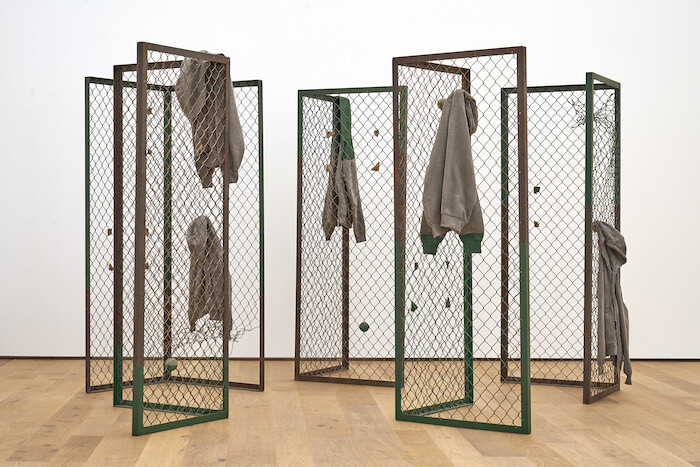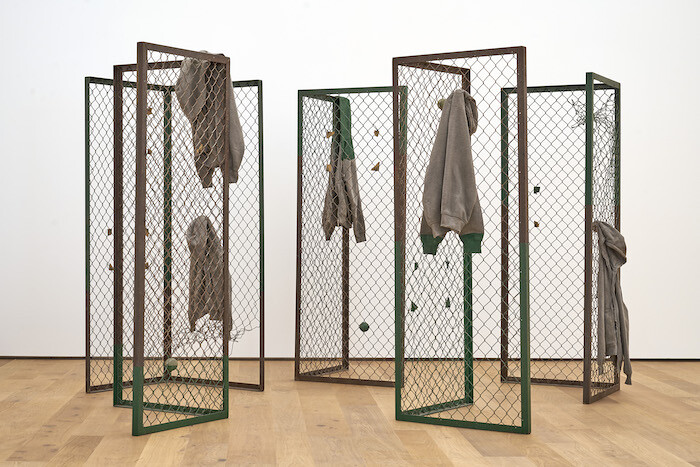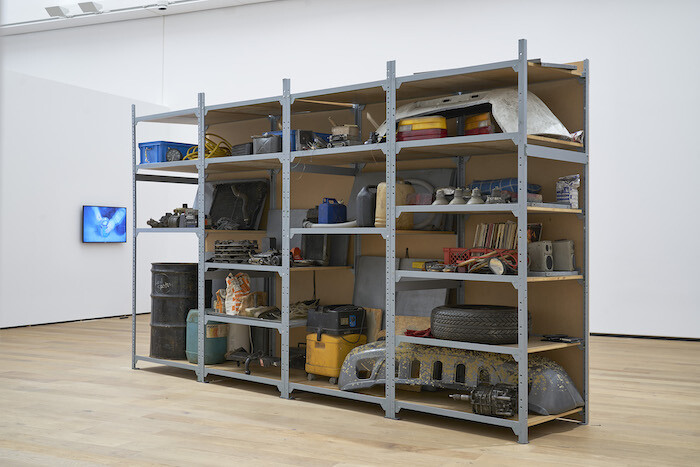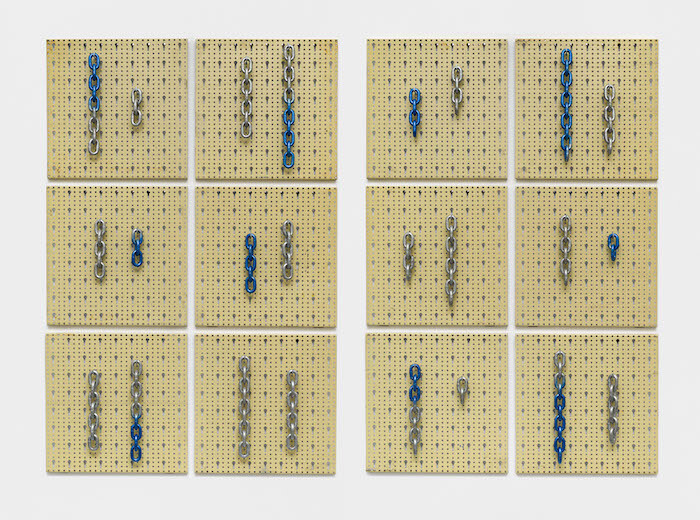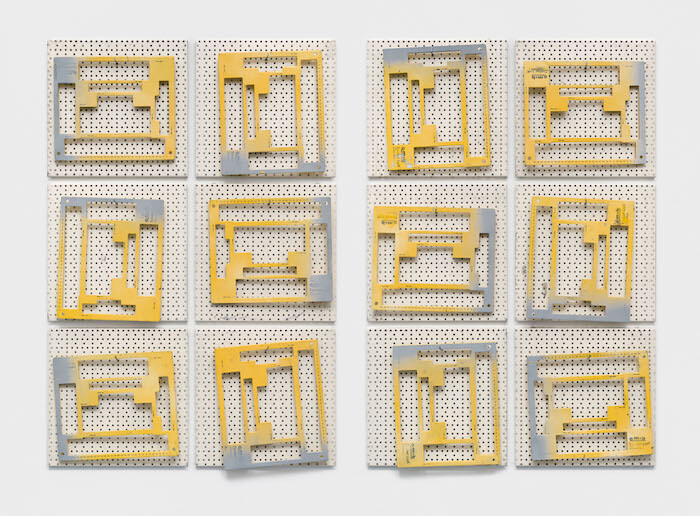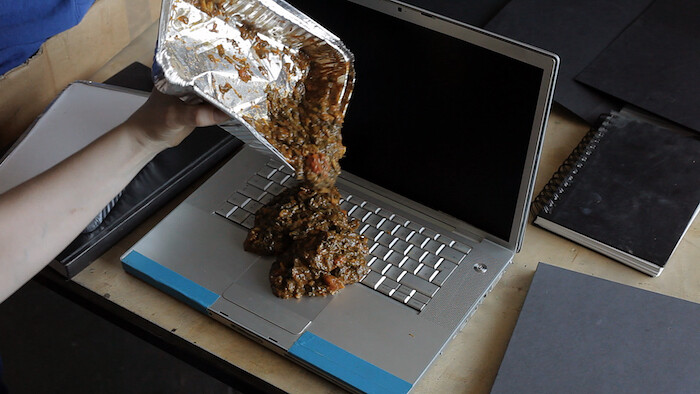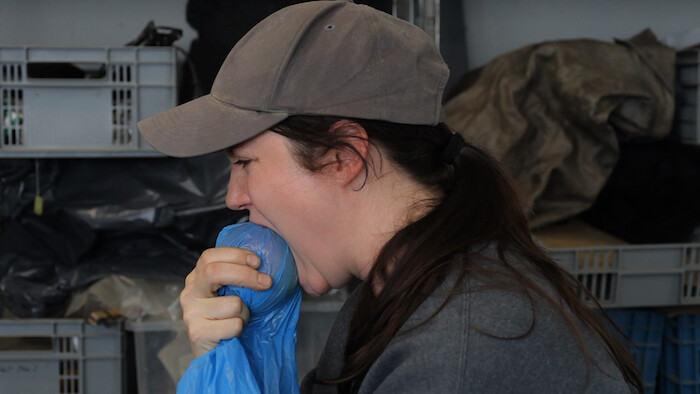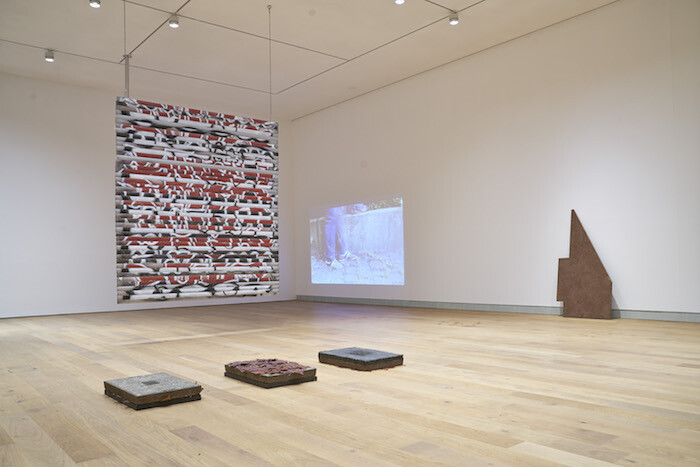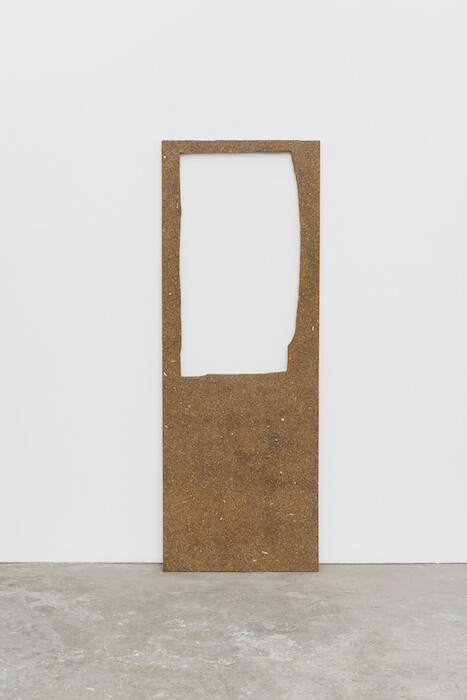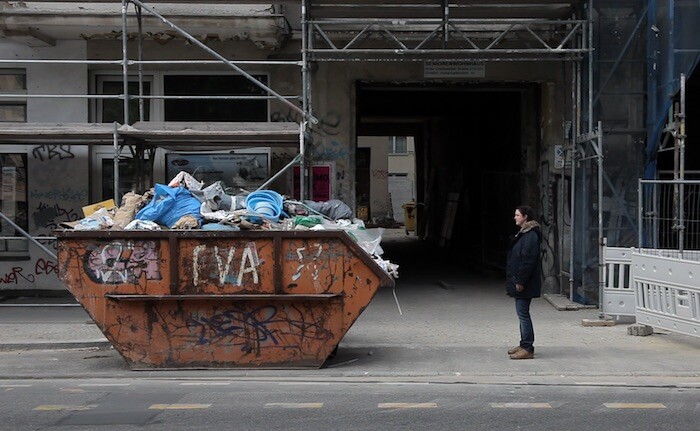I just didn’t get Sofia Hultén’s work Pattern Recognition (2017). Several sets of 12 small perforated metal sheets, like those that hang on workshop walls, are arranged in tidy grids. Each set holds a number of tools or objects, short pieces of chain on one, plastic cutting templates on another, for example. I should have been able to recognize patterns, because the work is inspired by computer scientist Mikhail Bongard’s “Bongard problems,” a series of tests of machine intelligence. But I couldn’t. Eventually—some time later—the obvious dawned on me. I had not to find a pattern within each sheet, or compare each sheet to its neighbor, but identify a pattern occurring in each of a set of six that was not repeated in the opposite six. I had framed the problem incorrectly.
Reframing is an approach that becomes familiar in this survey exhibition, an extended version of which was shown at Ikon Gallery in Birmingham last year. In works dating from 2008 to 2017, Hultén undertakes projects or records actions in which she challenges the logics operating throughout contemporary life and, in particular, surrounding labor and waste. To this end the artist often generates a comprehensible scenario, then undermines the causality we assumed. The video works “Nonsequences” (2013–2014) exemplify this: in Nonsequences IV a laptop is opened, then closed; a takeaway meal is placed on the laptop, then eaten. Afterward, the actions are repeated out of sequence: the laptop is opened inside a hoodie; the food is emptied onto the keyboard before it is eaten. An everyday procedure, remixed, becomes high-risk, though the artist carries out excruciating actions with a sanguine mien (when eating an apple through the plastic bag that might have been the waste bin for the core in Nonsequences I, for example).
Hultén’s sculptures require skilled labor and her chosen context is the workshop—she appears in several videos in the overalls of a manual worker—and tools are often her media. Effort may, however, be camouflaged; a recurrent idea is of “improving” an object before rendering it back to its original state, or an imitation thereof. A dumpster is taken apart, then welded back together with the sides turned inside out to make On a Fixed Centre (2011)—ultimately, a dumpster becomes another dumpster, and thus as good as invisible. This is beautifully demonstrated at the Museum Tinguely, where it is installed in the customary bin location outside the building against which visitors park their bicycles. In the same vein, Particle Boredom (2016–2017) is a series of found MDF off-cuts from which molds were made; the original board was then ground down and recast, suspended in resin, in the mold of its original shape. They are preserved, but the ambiguous result exists somewhere between protected and petrified.
Hultén’s fetishism for the workshop chimes with broader trends. The domestic workshop is a masculine space of retreat, a space of a man’s own that developed over the last century, as labor has changed in the West, and capitalist production systems have made the workshop a private place apart from paid work. A workshop—the real, rather than hobbyists’ kind—has become a curiosity (the popularity of steampunk must in part reflect nostalgia for the now-absent mechanical). In a workshop, actions have purpose, like fixing a broken machine, ordering equipment, or refurbishing a piece of furniture. Hultén often acts purposelessly or counterproductively, however, operating in a realm of surplus activity and found, unvalued material. A counterargument could indeed be made that Hultén produces art objects whose aura imbues them with added value. Nonetheless, the video Immovable Object/Unstoppable Force (Skips) (2012) teases viewers with the idea that an artist’s contributions to society are imperceptible, as Hultén is seen “moving” various dumpsters by telekinesis—they do not budge.
Though computer intelligence is a topic of recent study for Hultén, her own activity broadly consists of an anachronistic return to manual processes of work. Is her oeuvre totemic of resistance to the digital revolution; does it reframe its possible outcomes? Beyond her materials, Hultén works with a catholic range of models: her output can be read in relation to “alternative” economic systems such as bartering, recycling, and sharing; her videos are much like instructional YouTube films for hobbyists and DIYers; at the other extreme, she ultimately produces salable works from a workshop environment that for many has become culturally exotic. Yet by considering several models on a par and by articulating how cause and effect can be manipulated to destabilize their logics, she allows us to doubt what we consider inevitable.
